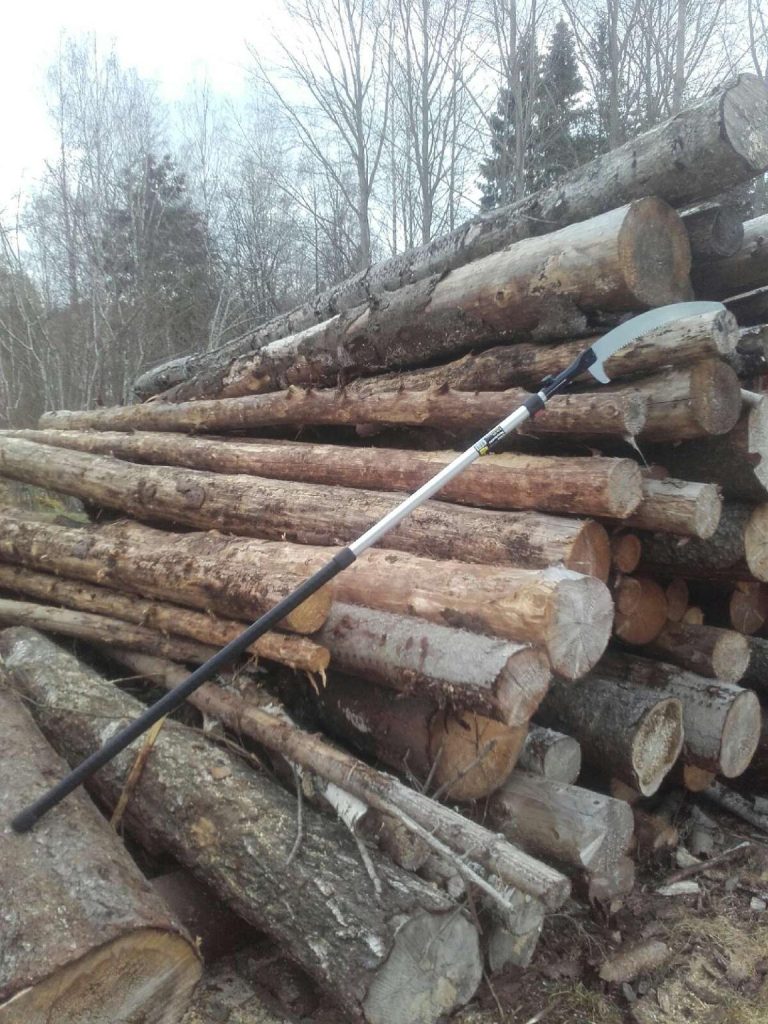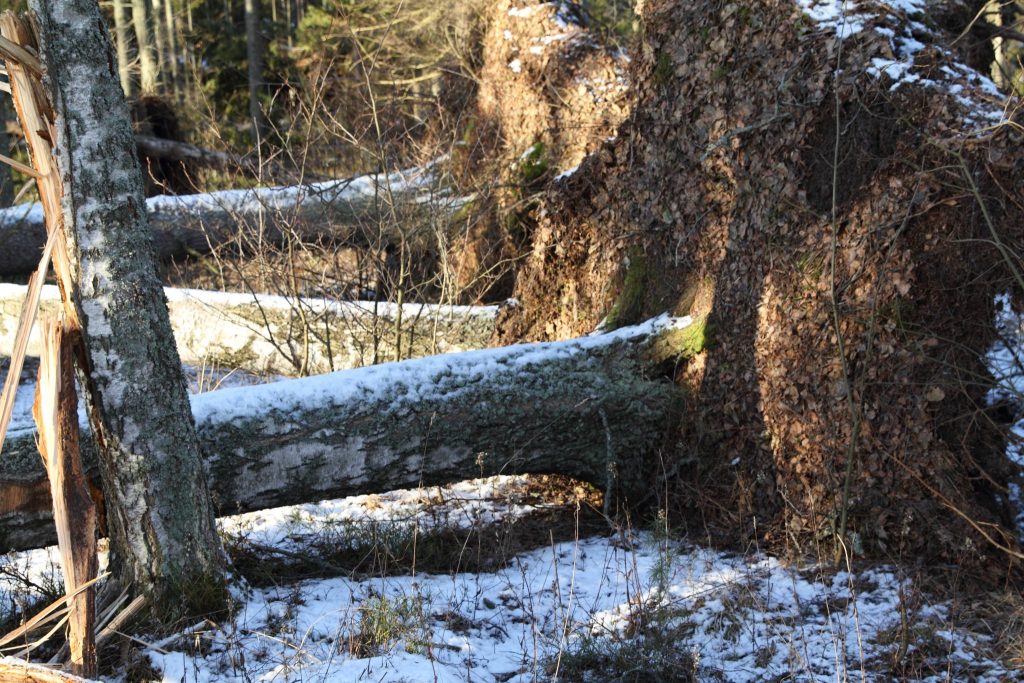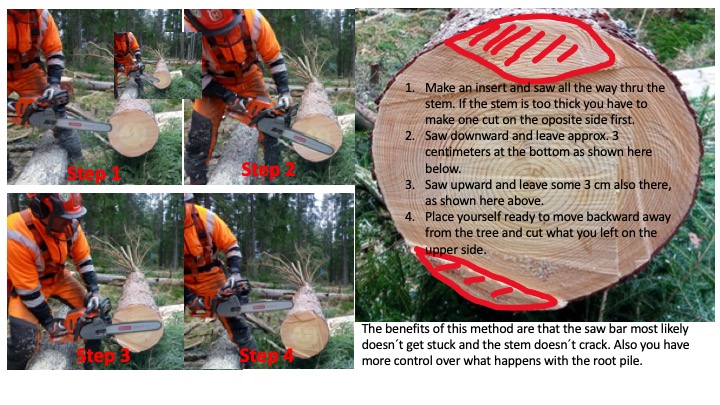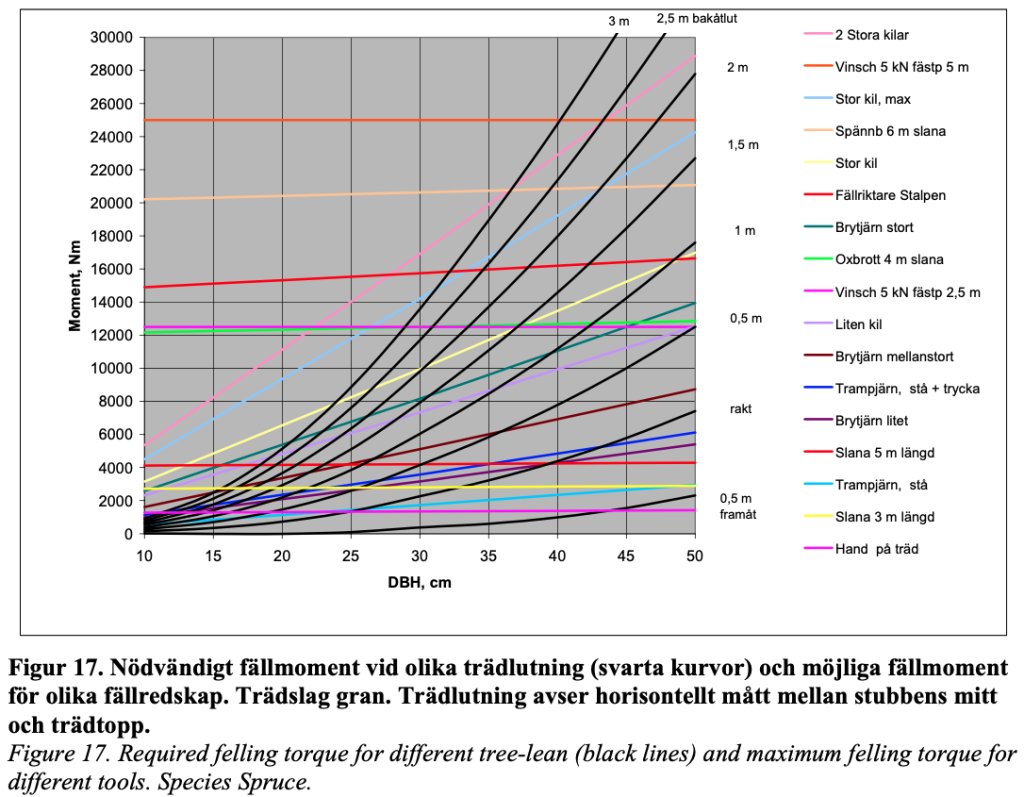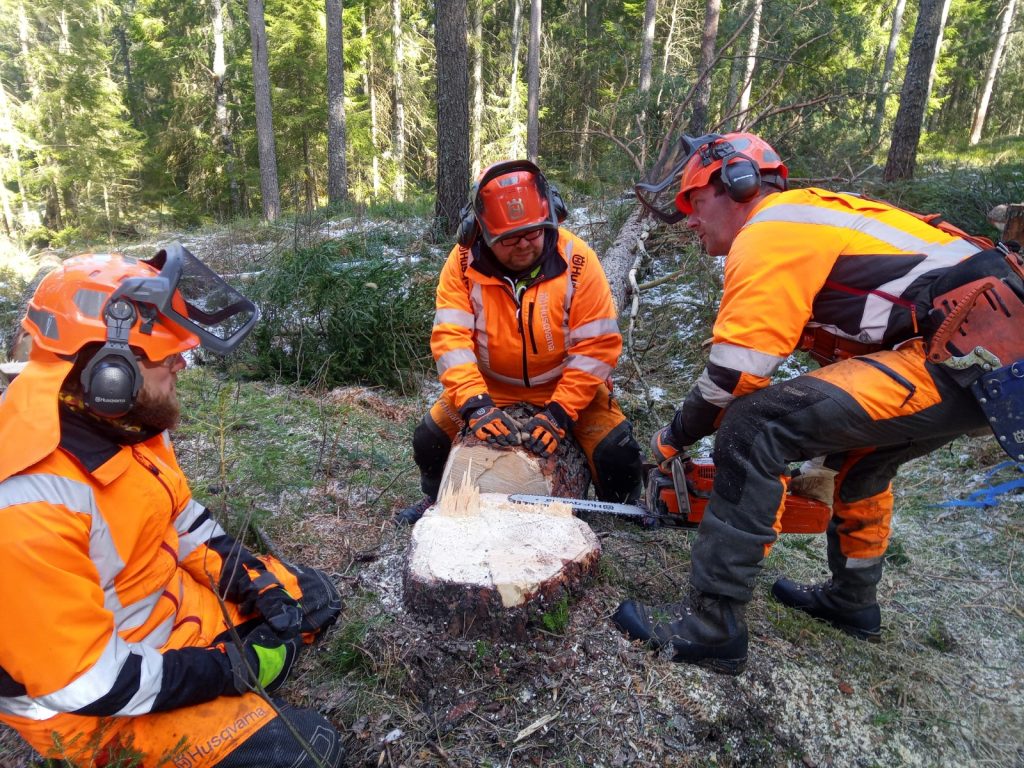Old dogs do learn to sit, or whatever they learn, also me when it comes to a chainsaw license. I have realized this week that even old dogs like me can actually learn something – even from younger people. I took a course in my profession, and learned …
Got a chainsaw license – check
Earlier this week I wrote an article about getting a chainsaw license. I have felled many trees, small and easy, big and complicated, I have worked in storm-damaged forests and I have survived with only a few close shots. The trees I have felled haven´t hit anything valuable, they actually fell more or less where I wanted them to fall. So …
Do I really have to learn more?
Yes! The day that you can´t learn anything more is the day when you lie six feet under the ground. Until then you can always learn new things. You have to have respect for that things change, methods and equipment develop, even when it comes to logging.
I took a three-day course in working in storm-damaged forests, taking down lodged trees and felling difficult trees. After these three days, I got my chainsaw license level C (I already had A and B). As mentioned above I had already done all this before, so I was surprised that there was so much new to learn.
New methods
Maybe I just missed it because I haven´t been working with chainsaws for a long time but I did learn some new things. Here are some examples of what was new to me:
Pruning saw
A pruning saw is normally used for tree pruning, mainly on pine trees (here in Sweden). But a pruning saw on a long stick, preferably telescopic, could be used when working with windthrown trees. You can eliminate the tension in small hard curved stems, from a distance (depending on how long stick you have), by cutting the stem with a pruning saw. A sharp, well maintained saw cuts stems of 10 centimeters in seconds, and you are on a safe distance from the stem when the tension goes.
You can also use the pruning saw to cut the last bit of a thick stem when cutting a windthrown tree lose from the roots. More on that below.
Photo: Lasse Kaubak, Nordfor
The “storm cut”
I have cut loose many trees from their roots after a storm. I have done it without taking any unnecessary risks and without sacrificing too much valuable wood. Eventually, I have learned how to do it both safer and more economical by using what we in Sweden call the storm cut.
In the illustration below you have to imagine that the photographer is standing in the uprooted part of a windthrown tree. The chainsaw license instructor, Lasse, is standing on the left side of the tree to cut it loose. Depending on the tension in the tree it could be safer to stand on the right side instead. Also, if the direction of the tension is unclear it´s mostly safer to stand on the right side. In this case, to make it easier for the photographer (me), he chooses to stand on the left side.
The cut mentioned in step 4 could also be made with a pruning saw, like the one on the photo above. Standing at a safe distance if there are any tensions left in the tree or if the uprooted roots fall towards the tree, in the wrong direction, like a mousetrap.
Felling
As mentioned before, I have felled many trees that lean in the wrong direction and managed to get them down more or less where I wanted without damaging power lines, houses or other valuable items. The only thing I actually hit with a tree was an old ladies’ bicycle that I didn´t see until I was delimbing the tree. The old lady, who turned out to be an angry old man (who was not sitting on the bike when it happened), could cycle away with no adjustments at all made to the bike, but in a bad mood.
Back in my days you had a look at the tree and made your calculations on directions and forces from your experience. Now I´ve learned how to measure the tree-leaning with plumb and with the help of a chart figure out what force and kind of tool I will need for the felling. Here is an example of such a chart (unfortunately mainly in Swedish).
Felling wedge
Felling wedge, one of the tools mentioned in the chart above (“kil”), is definitely not new. We had them already by the end of the 70´s, but I never used one. I have always trusted my old felling lever and haven´t even thought about an alternative. Now I have seen what lifting capacity a wedge actually has. A normal tree with a diameter in breast height (dbh) of 50 centimeters that leans backward 1 meter in the top, could be lifted over in the opposite direction with wedges that lift a little less than 4 centimeters in the felling cut.
Conclusion
These were just a few of the things I learned during the three days. It would have been nice if the course was a bit longer. If so, I could have practiced some details more. That has to be done in real life instead.
“It´s never too late” is a popular expression that in most cases is true. I have no regrets about taking this course. I did learn things that I had no clue about before, despite my age and experience. Finally, I also got to know new people.
Last, but not least, thanks to this course and the AB and now C level on my chainsaw license, I am officially allowed to work in certified forests also with windthrown trees and to fell “complicated” trees with precision.
Sources: Nordfor, Husqvarna and Säker Skog, Tomas Gullberg´s Rapport nr 29 2006






